The National Wildlife Refuge System is one of shining stars of United States conservation history, and the refuges in this system offer some world-class nature experiences. Here are ten places for the traveling naturalist to explore this summer.
Like so many great conservation ideas, the national wildlife refuge began under President Theodore Roosevelt. He created the Pelican Island refuge in Florida to protect nesting birds from the poachers.
The system has now grown to include more than 560 refuges protecting more than 150 million acres. And there is at least one refuge in every U.S. state. Most offer great opportunities for birders, wildlife watchers and other outdoor enthusiasts.
With such an embarrassment of riches, where to begin?
I’ve picked 10 refuges perfect for the avid naturalist. I have visited all but one on the list, so it’s admittedly biased. I’ve included links for more complete visitor and science information.
There are plenty of other superb refuges out there. Let me know your favorites.
So get out and enjoy your conservation heritage. And buy a Duck Stamp – the proceeds go to protecting more habitat in the system.
-
Laguna Atascosa National Wildlife Refuge, Texas
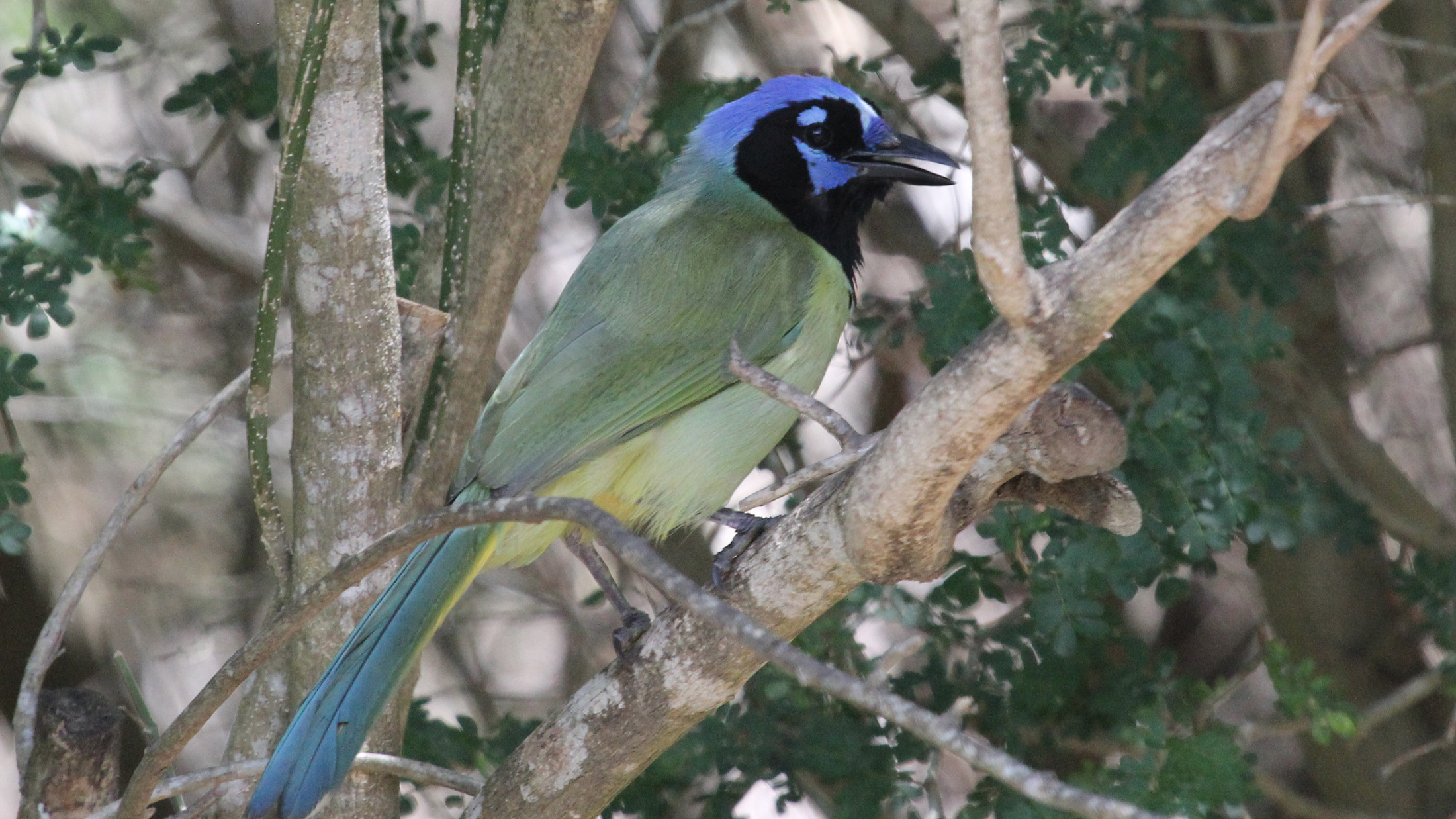
Green jay, Laguna Atascosa National Wildlife Refuge. Photo: Matt Miller/TNC I visited this South Texas refuge two weeks ago, and immediately wished I had reserved more time there. First, there are the birds: colorful ones like green jays and Altamira orioles, large ones like the pheasant-sized chacalacas, rare ones like aplomado falcons. It is far enough south to have an array of tropical species, and it sits along migratory routes so it attracts huge numbers of shorebirds. Add to that plenty of other interesting animals like bobcats, a diversity of butterflies, indigo snakes and even ocelots (one was spotted via camera trap walking right by a popular birding blind). On Laguna Madre, you can watch marine birds to your heart’s content, or enjoy world-class fishing for redfish. There are two other national wildlife refuges, plus state parks and private preserves, nearby. A wandering biologist’s dream.
-
Quivira National Wildlife Refuge, Kansas
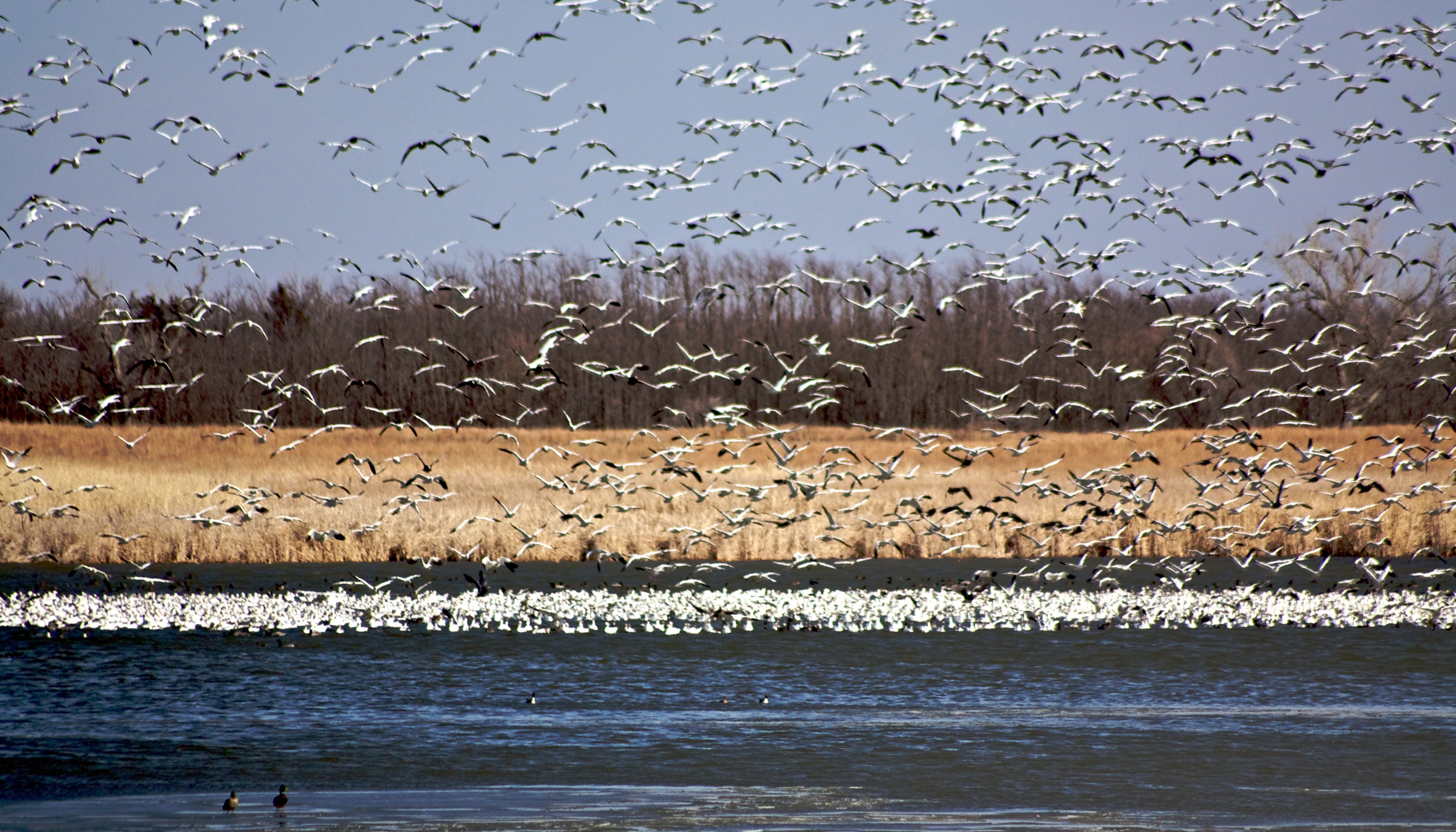
A flock of birds at Quivira National Wildlife Refuge. Photo © Jeff Slater/Flickr through a Creative Commons license. I’ve written previously about the huge congregations of sandhill cranes in Nebraska in the spring. Here’s where to see the cranes in the fall. Time it right, and you’ll see thousands of them, and even more white-fronted geese. If you time it really right, you’ll also see rare and beautiful whooping cranes. Plus there’s plenty of other birds and a prairie dog town.
-
St. Mark’s National Wildlife Refuge, Florida

A great blue heron stalks a salt marsh at St. Mark’s National Wildlife Refuge. Photo: Matt Miller/TNC The salt marsh is one of the most biologically productive habitats on earth, and this Florida refuge is one of the best places to see this profusion of life. Viewing blinds and a wildlife drive bring you up close to clapper rails, shorebirds, herons and waterfowl. Look closely, and you might be lucky enough to see alligators. The refuge also protects 43 miles of Gulf Coast shoreline and longleaf pine habitat. Longleaf pine forests once covered 93 million acres in the southern United States, but most have disappeared in the face of logging and altered fire cycles. St. Mark’s is a great place to experience this forest and see on of its rarest inhabitants: the federally endangered red-cockaded woodpecker.
-
Rachel Carson National Wildlife Refuge, Maine
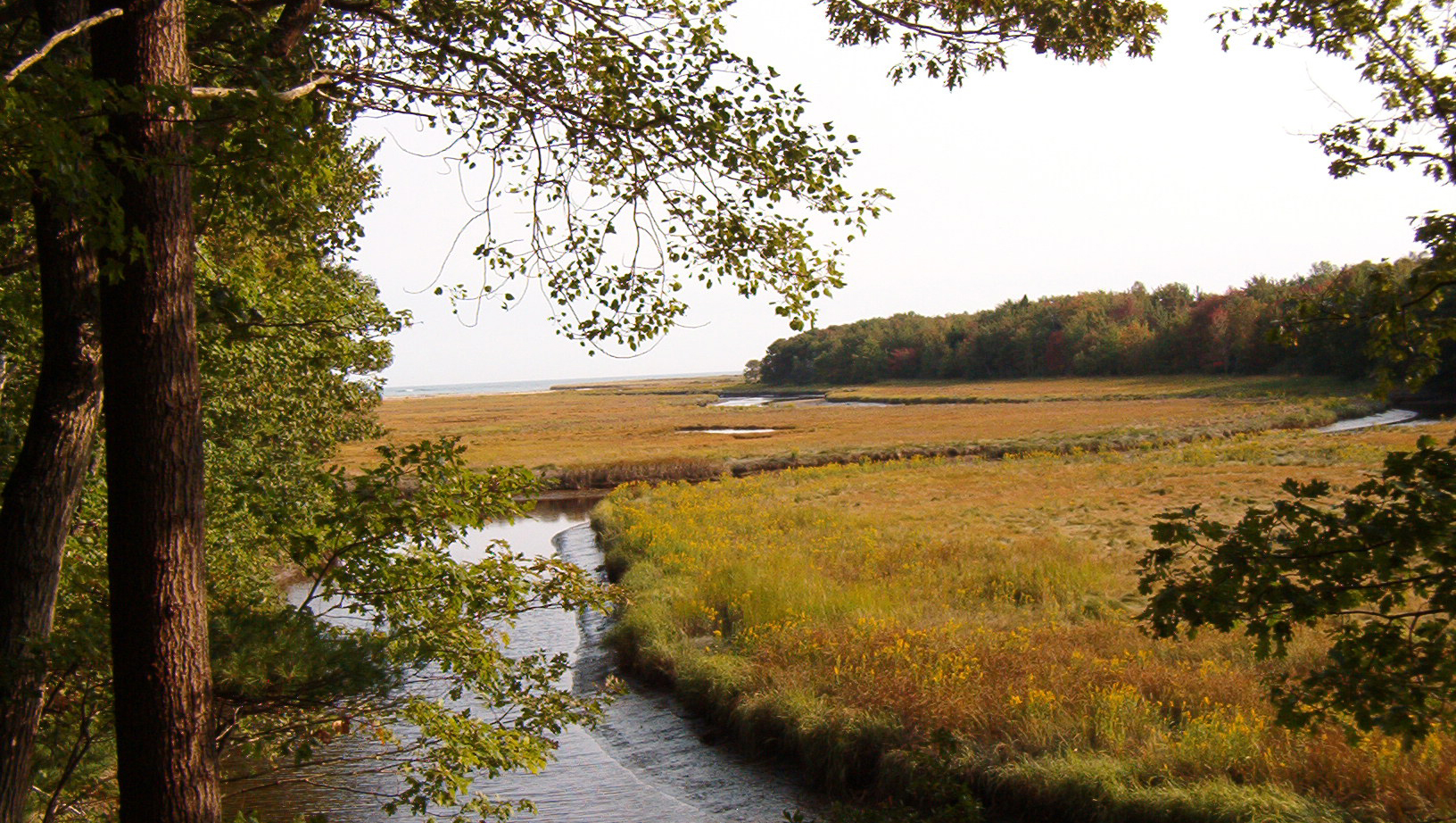
Rachel Carson National Wildlife Refuge. Photo © Aaron Knox/Flickr through a Creative Commons license. This year marks the fiftieth anniversary of Rachel Carson’s passing. What better way to honor this remarkable biologist than visiting the refuge created in her honor. Carson is best known for Silent Spring, her work educating the public on the devastation caused by pesticides like DDT. But she was also an accomplished marine biologist and naturalist, and the Maine coast was one of her most cherished places. The Rachel Carson NWR protects salt marshes and shrubland near her Maine summer home. The Carson Loop Trail offers a great views of the expansive salt marshes. Keep an eye out for the more than 250 bird species found there, including piping plovers and saltmarsh sparrows.
-
Horicon National Wildlife Refuge, Wisconsin

Horicon NWR was set up to protect redhead ducks. Photo: Matt Miller/TNC The Horicon Marsh is the largest cattail wetland in the United States. Come fall, those cattails are waving in Wisconsin breeze and huge flocks of ducks are on the water. Especially redheads: the species this refuge was created to protect. It’s a beautiful duck and this is the place to see and photograph them.
-
Chincoteague National Wildlife Refuge, Virginia
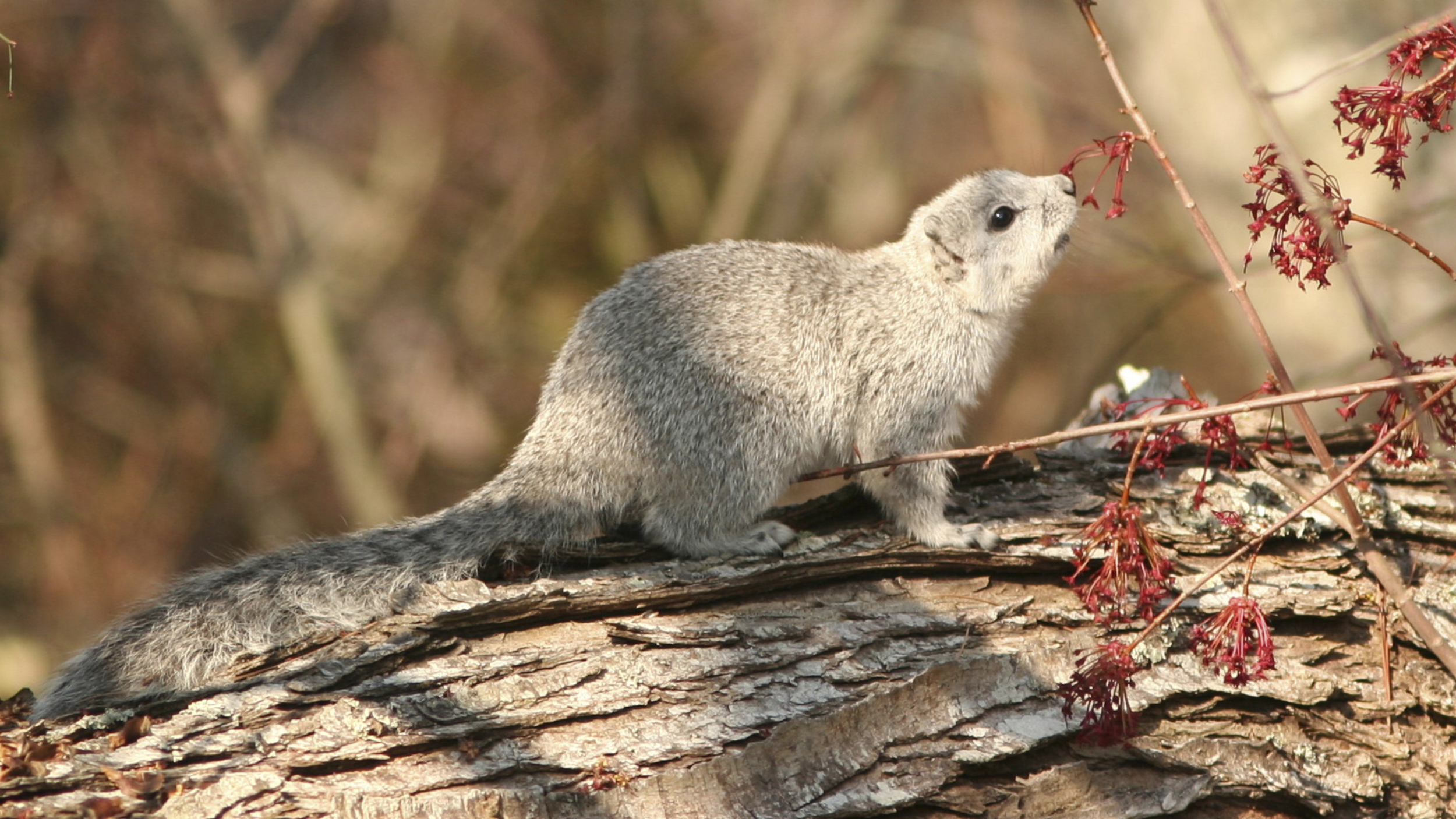
Delmarva fox squirrel in Chincoteague National Wildlife Refuge, Virginia © Dave Spier Like many animal-crazy kids my age, I first fell in love with Chincoteague through a book: Marguerite Henry’s Misty of Chincoteague, about a wild pony on the island. It later became a favorite family vacation spot. The ponies are still there, but the island has now grown popular for its combination of beach and wildlife. Maybe too popular. But you can still find the strikingly large (and rare) Delmarva fox squirrel, northern bobwhite, non-native sika deer and a long list of waterfowl and shorebirds. In the late fall, flocks of snow geese stretch in every direction, and waterfowl specialties like Atlantic brant, ruddy ducks and canvasbacks can be spotted.
-
Wichita Mountains National Wildlife Refuge, Oklahoma
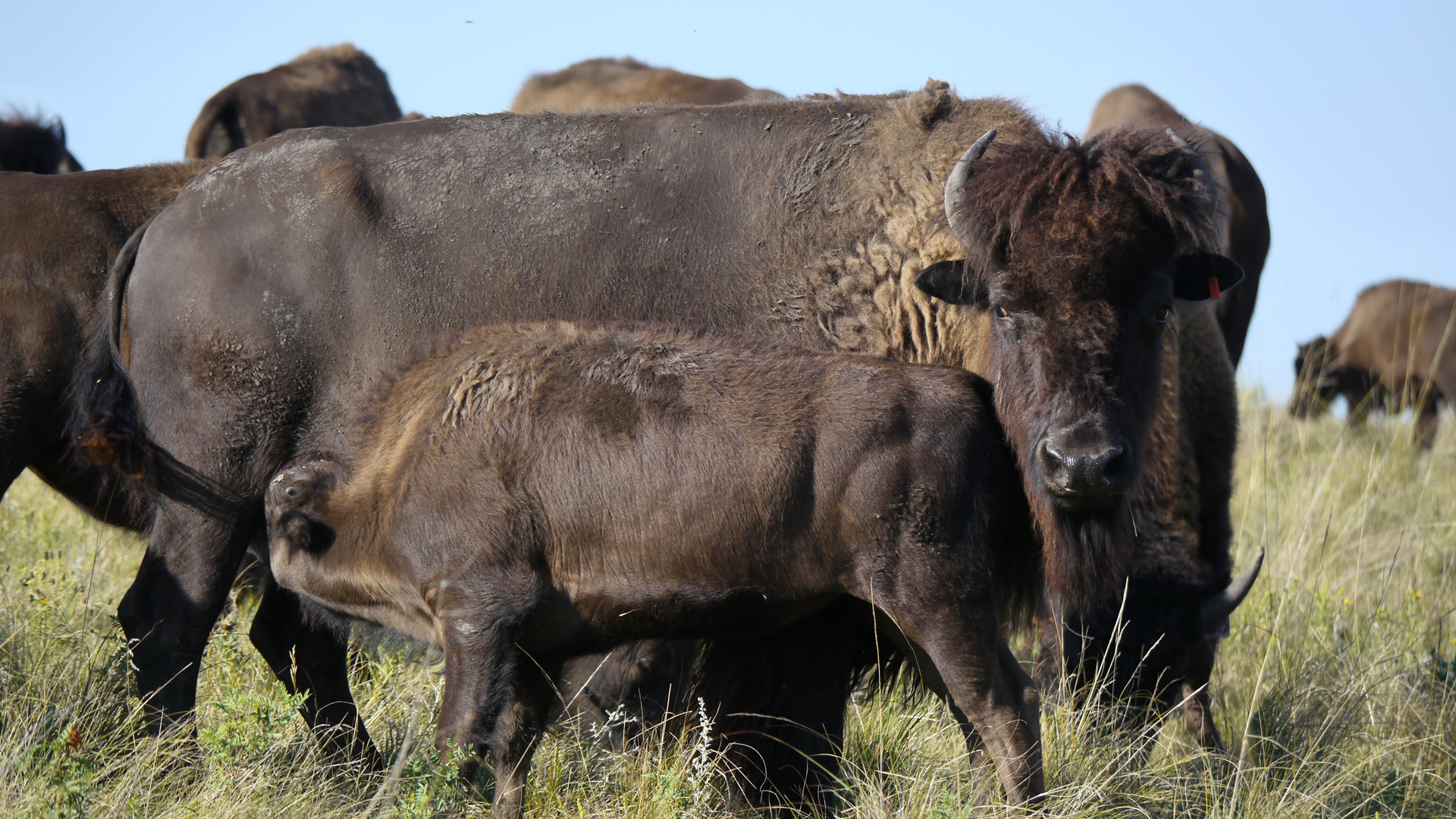
Bison herd. Photo: Matt Miller/TNC This is one of the first refuges in the nation specifically set up to protect big game. When it was established in 1905, bison and elk looked to be on the fast track to extinction. You can still see them – plus free-ranging longhorn cattle, prairie dogs and other wildlife – roaming this interesting refuge. The Wichita Mountains are scenic and offer great hiking, and as with many refuges, there are excellent naturalist-led walks to learn more about the plants, geology and birds.
-
Hart Mountain National Antelope Refuge, Oregon
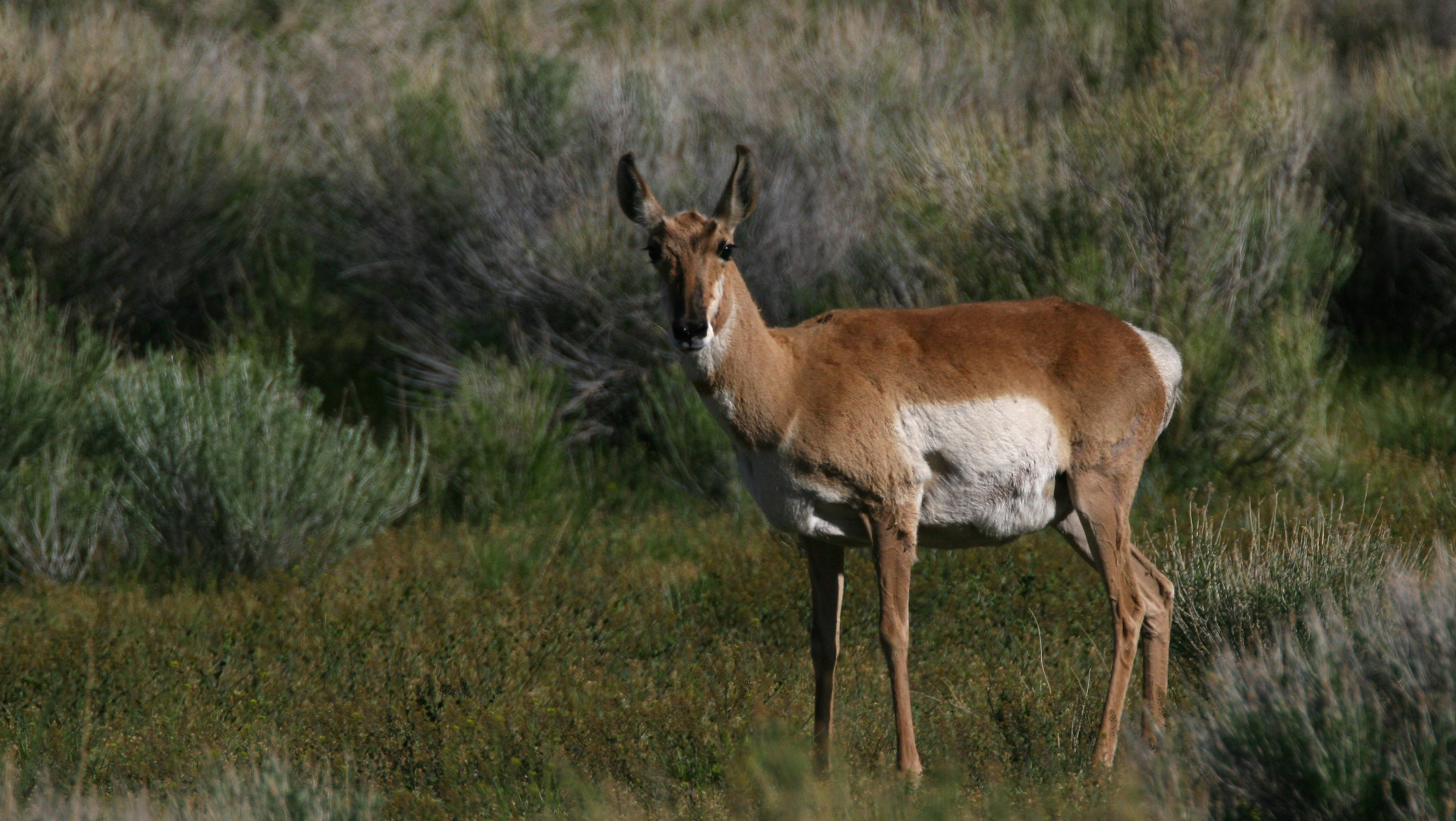
Pronghorn (Antilocapra americana) at Hart Mountain National Wildlife Refuge. Photo © Blake Matheson/Flickr through a Creative Commons license. Anyone who has driven interstates in the Western United States has seen plenty of sagebrush. But that habitat is mainly degraded, a shadow of its former glory. If you want to see high-quality sagebrush, head to Hart Mountain. You’ll see plenty of pronghorns, as well as other species that thrive in sage country: sage grouse, sage thrashers, sagebrush sparrows and mule deer. In the hills, you can look for bighorn sheep while hiking to petroglyphs made by indigenous hunters. You can combine a visit here with Malheur National Wildlife Refuge, a wetland refuge in the desert that attracts huge numbers of migratory birds.
-
Ash Meadows National Wildlife Refuge, Nevada
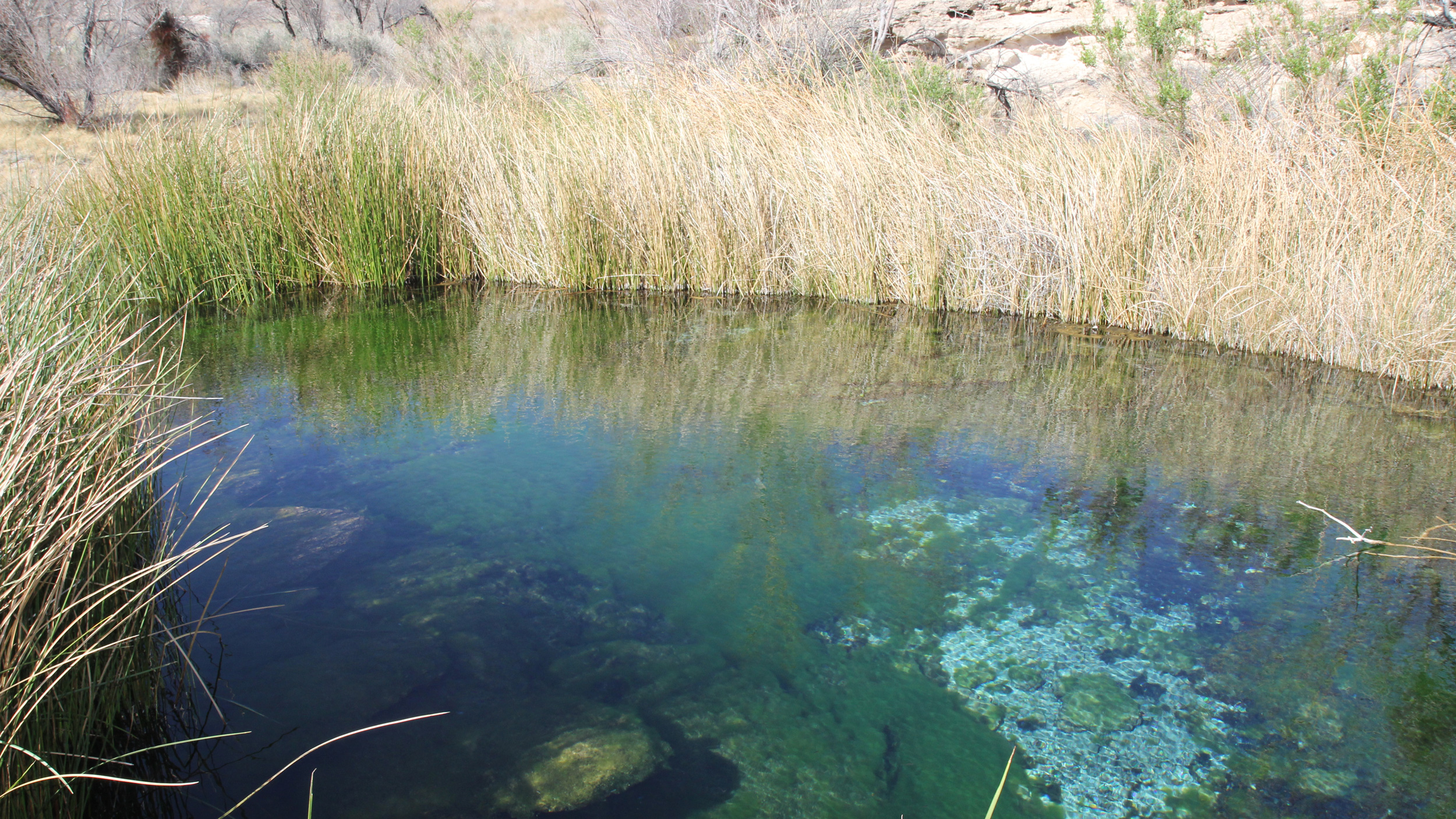
Ash Meadows National Wildlife Refuge. Photo @ Matt Miller/The Nature Conservancy A true desert oasis, The Nature Conservancy helped create Ash Meadows in the 1970s – when it was originally slated for a giant housing development. The crystal-clear pools here provide homes for fish and invertebrates found nowhere else on earth. Excellent viewing platforms allow you to see the pupfish and other wildlife. Check out my previous story to learn more about the evolutionary wonder that is the pupfish. If you’re heading to Death Valley National Park, include a stop to this refuge in your itinerary. You’ll see creatures that have some of the smallest home ranges of any vertebrates on the planet.
-
Togiak National Wildlife Refuge, Alaska
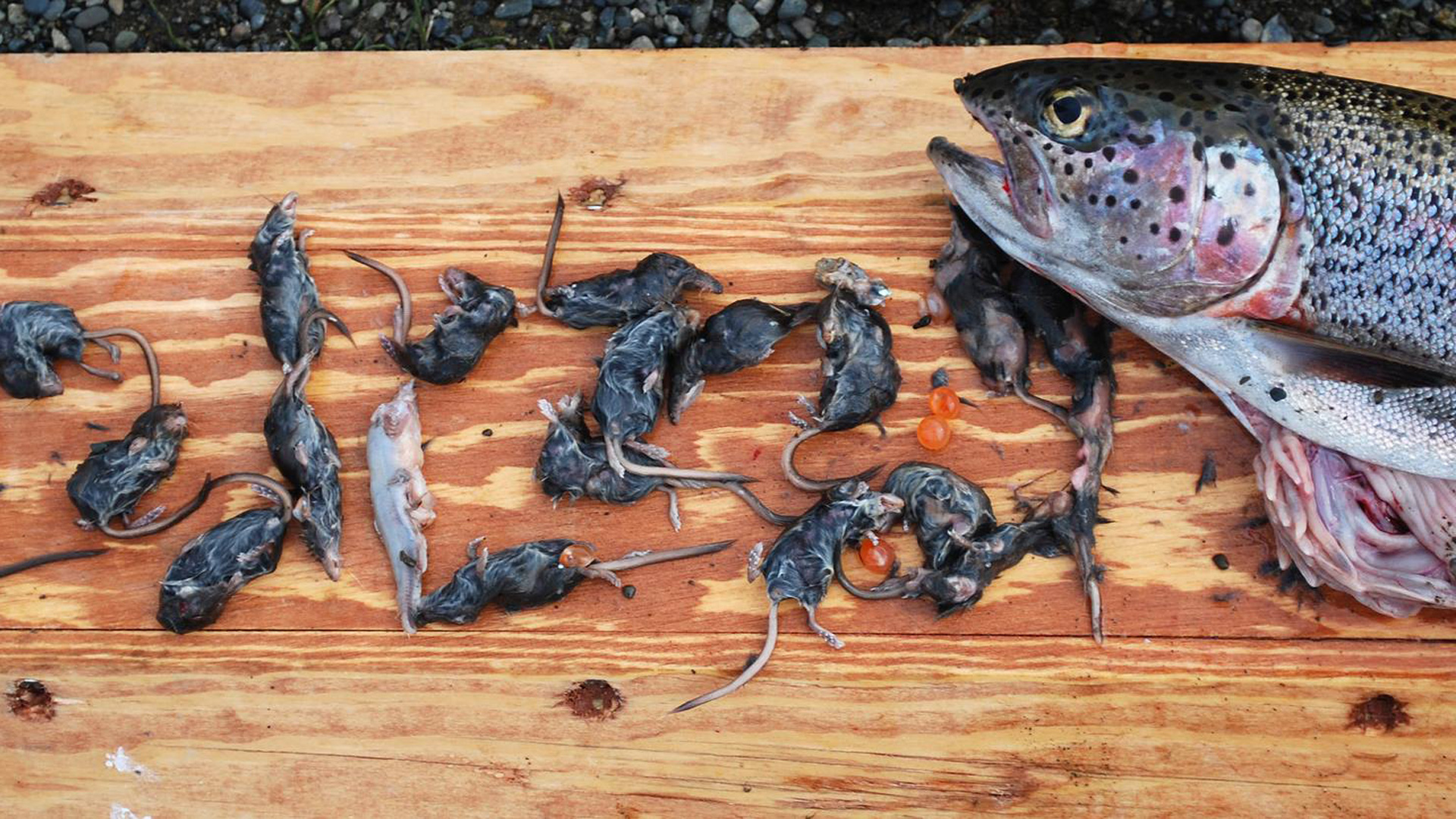
The shrew-eating trout of Togiak National Wildlife Refuge. Photo: U.S. Fish and Wildlife Service. This is the only one on my list I’ve never visited, but it’s a definite dream destination. I first learned of this refuge when a U.S. Fish & Wildlife staffer sent me a photo of a trout captured there that had eaten 19 shrews. That led to a highly-popular blog post, and I’ve been following the happenings at Togiak ever since. The refuge’s Facebook page is always enticing, with its photos of walruses and emperor geese, really big fish and even bigger bears, all amongst downright stunning scenery. It’s full of the kind of stuff that gets a fly-fishing, megafauna-loving, solitude-craving naturalist writer foaming at the mouth with excitement. One for the bucket list.
And with 560+ refuges, I’m sure there are many others out there I should check out.
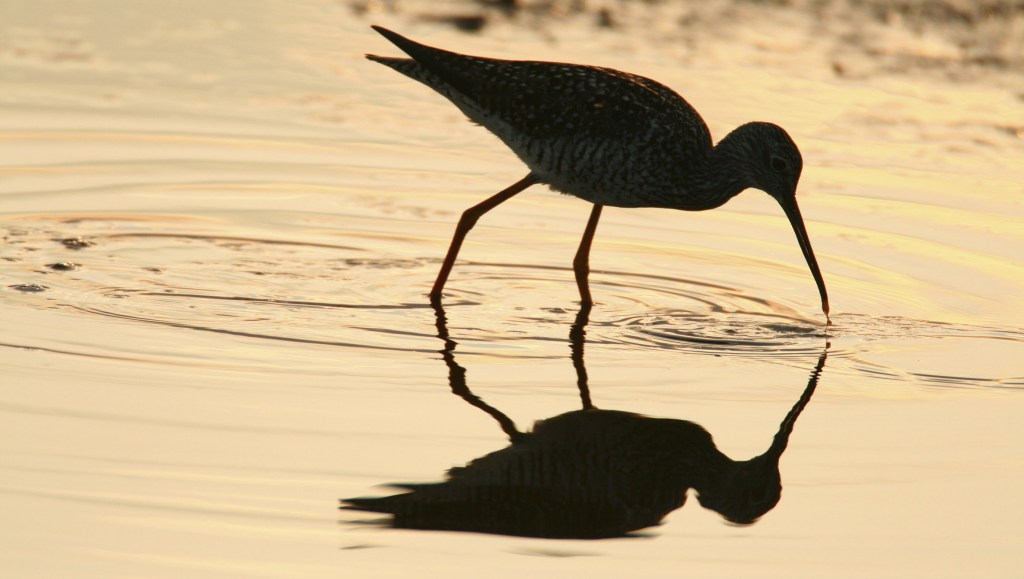



How does a trout catch a shrew? Surely that garden pest cannot swim. Also, I remember reading somewhere many years ago that the most common mammal in North America is the vole, a cousin of the shrew. True? Wildlife refuges run under the radar, but are a great place to observe nature!
Tim,
There are many species of shrews found around the globe. The water shrew can indeed swim. However, the shrews eaten by the Togiak trout were not water shrews. The fact that they were poor swimmers may have contributed to their demise — they fell in the river and were gobbled up by the trout. You can read more here: https://blog.nature.org/2013/09/03/shrew-eating-trout/ This blog also links to another story, on a trout that eats voles. Thanks for reading!
I personally enjoyed visiting Rydell NWR in Minnesota. It has wetlands, prairie and boardwalks thru the wetlands. We saw bluebirds , migrating warblers and trumpeter swans while standing in a single location. We just turned our head!
How could you leave out Ding Darling on Florida’s Gulf Coast. I lived in FL for 30 years and have never seen as many roseate spoonbills as there. Also incredible #s of other birds, as well as otters ans even an occasional crocodile. And what’s BEST, all of these critters can be seen right from the dike you drive on. I’ve never seen a sight quite like the spoonbills coming in to roost at sunset.
Hi Bob,
Thanks for writing. I have not gotten to Ding Darling NWR but I hear great things about it from everyone who has been there. I hope to visit this year! Best, Matt
If these are refuges for the wildlife why are humans permitted to fish and kill the animals? Is hunting permitted too along with ATV and off-road vehicle disturbance?
Laura,
Thanks for your comment. Fishing and hunting are permitted on many national wildlife refuges. I know that is a controversial idea. I also understand that it seems incompatible with a wildlife refuge. However, I would point out that the refuge system was originated by hunters, and paid for by the Federal Duck Stamp, a stamp that duck hunters must purchase. This stamp continues to fund refuges. So hunters are paying a lot to conserve these wildlife wonders. (In fact, you can get in refuges for free by showing a Federal Duck Stamp). Hunting is regulated on refuges and does not occur for sensitive species. I highly recommend Martin Smith’s Wild Duck Chase for a highly readable book on the Federal Duck Stamp and what it has accomplished for conservation. Thanks for reading. Best, Matt
Matt and company — what a splendid presentation of nature goings-on and I am most appreciative. my interest is in engaging high schoolers in environmental writing and noted the Outdoor Writers group which sounds like a resource for locating other such writing programs. I am on the banks of Lake Lanier outside of Atlanta, and opportunities to increase awareness of natural processes around the lake are everywhere with schools needing to expand environmental emphasis. Cool Green Science is a remarkable resource — and inspiration for young writers. If anyone knows high school nature writing programs, i’m interested. I’m just in the “idea” stage. Many thanks for the work you do. polly hart
After regularly conducting American birders/tourists in North Central India I am intrigued by wildlife and conservation in US & Globally. I am really interested in comeback of the bison in US.
I thank you for the conservation article.
Excellent article, but Horicon National Wildlife Refuge much larger write-up about it. 🙂
Ricky
That’s a Tri-Colored Heron not a Great Blue, you are right Ray. I just saw this link on FB and saw that photo and thought the same thing.
Great stuff, Matt–thank you. One correction, I think–on the Quivira refuge piece, isn’t that a Tri-colored Heron?
Thanks for the tour! Hart Mountain the only one on the list I have been to. As for a favorite Kootenai National Wildlife Refuge is small but rapidly becoming a favorite of mine.
What a great list! I’ve visited only five of these, but I’ll definitely put the others on our personal bucket list.
If you have not visited the Rocky Mountain Arsenal National Wildlife Refuge, you should definitely make the trip. I am a bit biased here, not just by proximity, but because our family moved to Denver for my husband, an environmental engineer, to work on the clean-up of this former Superfund site. RMANWR is a restored site, rather than one created to preserve its existing resources. Wildlife refuges created from formerly polluted or commercialized sites are an important step in repairing damage done when laws were less restrictive. Here in Denver, where high plains desert meets the foothills of the Rockies, the RMANWR has restored most native plants, cleaned and restocked with native species a natural lake on the property, and established a herd of bison whose DNA is not corrupted by cross-breeding with domestic cattle. The refuge hosts wintering bald eagle populations and is home to more than 20 other species native to the high plains. It may be “urban wilderness,” but it has become a lovely place for us city-dwellers to escape the metropolitan hustle and bustle.
Favorite NWRs: Merritt Island, Okefenokee, Klamath Basin, Kenai.
Great List! Some of my favorites are Ottawa NWR in Ohio and Big Branch Marsh NWR in Louisiana.